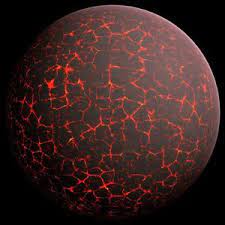Semester 1

STRATIGRAPHY AND QUATERNARY GEOLOGY
COURSE OUTCOME
The course offers a detailed knowledge on different types of conventional and advanced
stratigraphic approaches in studying the earth history. It aims to have a deeper knowledge in
the Precambrian and Phanerozoic stratigraphy of Earth with special reference to India. The
course of Quaternary Geology aims understanding different proxies, dating techniques and
important processes in Quaternary period.
Unit I (12 hours) Stratigraphic principles and evolution. Chronostratigraphy, Biostratigraphy and Lithostratigraphy, stratigraphic correlation. Evolution of Geological Time Scale. Procedures in seismic stratigraphy, magneto-stratigraphy, cyclostratigraphy, pedostratigraphy, chemostratigraphy and sequence stratigraphy. Unit II (10 hours) Major geological events in Phanerozoic Eon. Major extinction events in Phenerozoic. K- T Boundary extinction and its causes. Volcanic eruption and Meteorite impact hypothesis.
Unit III (12 hours) Precambrian stratigraphy: Precambrian Crust- Nature and evolution of primitive crust and characteristic features of Achaean crust. Detailed study of Precambrian stratigraphy in India with special references to SGT, Dharwar, Bastar, Singhbhum, Aravalli and Bundelkhand Cratons.
Unit IV (10 hours) Mobile belts in India – Pandyan, Eastern Ghats, Satpura and Aravalli mobile belts. Evolution and stratigraphy of Proterozoic sedimentary basins of India – Cuddapah, Vindhyan, Kurnool. Unit V (12 hours)
Phanerozoic stratigraphy of India- Palaeozoic Stratigraphy of Kashmir and Kumaon. Stratigraphy and evolution of Deccan Volcanic Province, Gondwana Super group. Cenozoic of Bengal basin. Boundary problems- Permian-Triassic and Cretaceous-Tertiary with special references to India.
Unit VI (12 hours) Definition of Quaternary. Significance and subdivisions. Archives of Quaternary history; tree rings, corals, speleothems (cave deposits), peat deposits, dunes, lake sediments, marine sediments, glaciers, fluvial deposits. Climate and climate variability: various time scales of climate variability.
Unit VII (12 hours) Quaternary dating methods– Radiocarbon, Uranium series, Luminescence– TL & OSL, Dendrochronology, Varve chronology, Lichenology and layers in Ice cores. Relative dating methods – Using surface weathering, Amino acids and obsidian hydration. Techniques for establishing age equivalence - Oxygen isotope chronostratigraphy, Tephro chronology and using paleosols.
Unit VIII (10 hours)
Ice Ages during Quaternary- factors controlling glacial cycles. Various stages in Quaternary
glaciations. Eustatic Sea Level changes and their global significance.
- Teacher: AnishA U
